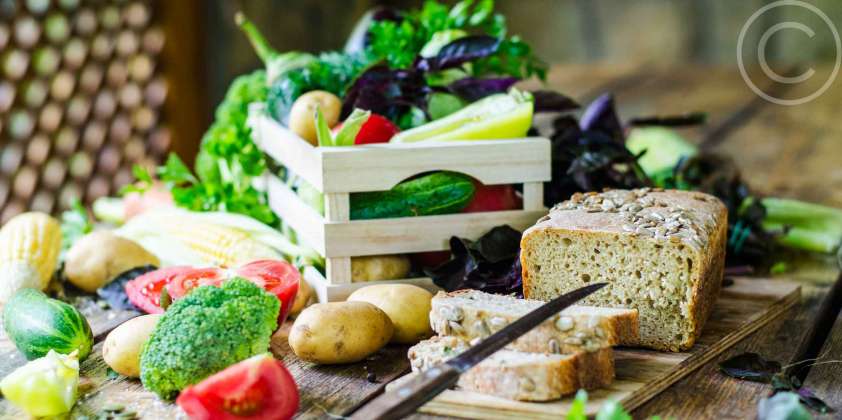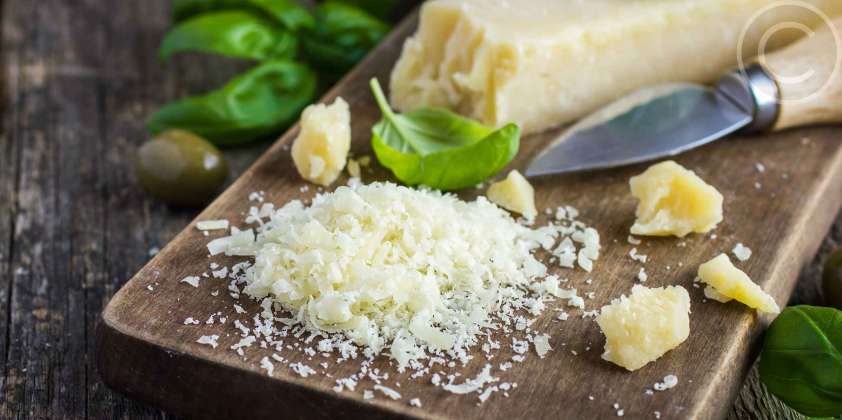Having nutritious snacks to eat during the workday can help you stay energized and productive. Here are some simple and healthy snacks…


Having nutritious snacks to eat during the workday can help you stay energized and productive. Here are some simple and healthy snacks…

Below, you’ll find 49 easy healthy snack ideas to satisfy any craving. Some are sweet and nutty, others are salty and crunchy,…

People often incorporate fennel into their diet for its licorice-like flavor and health benefits. Many also use it as a natural remedy.…

Plant-based eating should never be boring! That’s why we’ve rounded up our favorite finger-licking-good vegan recipes that will impress even the pickiest…

I love cheese, it is so good! That is one thing I always have on hand. My all-time favorite cheese has to be mozzarella. I love string cheese, eating it plain, and of course on pizza. Time to learn how to make homemade mozzarella cheese using just 2 ingredients.
If you are a cheese lover like me, then you have got to give this easy homemade mozzarella cheese recipe a try. You can use it the same way you use store-bought cheese. And you know exactly what is going into it.
Traditional cheesemaking requires you to use citric acid and a product called rennet. Similar to the process I show in this mozzarella cheese recipe. But, for this recipe, I will teach you how to make it without using those ingredients. It is super easy to make, if I can do it, you can do it. Let’s get started!
Step 1: Gather the ingredients
Raw milk next to a large yellow pot on a white counter top.
In order to make this simple homemade mozzarella cheese recipe you need just the following ingredients:
Raw Milk or Pasteurized Whole Milk – Do not use ultra-pasteurized milk or homogenized, the cheese won’t turn out correctly, it will wind up kind of like cottage cheese.
Distilled White Vinegar – This is used instead of the classic citric acid and rennet ingredients.
Cheese salt – This is optional, you can also use flaky sea salt or kosher salt. Iodized table salt is not recommended.
Water – This is used for cooling down the cheese. But isn’t an actual cheese ingredient.
Homemade mozzarella cheese ball on a wooden cutting board.
Tools
Large pot
Spoon
Gloves, optional
Bowls
Plastic wrap
Thermometer
NOTE: If you prefer you can actually buy a cool cheese-making kit, which has everything you need minus the dairy/milk to make several different kinds of cheese, including mozzarella.
Step 2: How to make homemade mozzarella cheese with just 2 ingredients
Raw milk being poured into a large yellow pot.
Pour the milk into a large stockpot or I like to use my dutch oven.
Remember to use raw milk (unpasteurized) or you can use normal pasteurized whole milk, but NOT ultra-pasteurized or homogenized. Ultra-pasteurized and homogenized won’t work properly and won’t produce a good curd. Also, if the particular brand of pasteurized milk you buy doesn’t work well, try a different brand.
I find I get the best results with raw milk. But that can be a little more difficult to find for us here in the States. If in the States try places like Sprouts, Natural Grocers, Whole Foods, etc.
Set the heat in between medium-low and medium. We don’t want to heat the milk up too quickly.
Hand with red thermometer in milk on a stovetop.
Gently keep stirring the milk so it heats evenly and reaches right around 115 F/46 C.
A thermometer really comes in handy for this. But if you don’t have one it should feel like hot bathwater.
Pouring vinegar into a pot with hot milk.
Once the milk gets to that temp, turn off the heat, and add in the vinegar. Stir in the vinegar for about 30 seconds so it evenly mixes in with the milk. It will start to curdle almost immediately.
Add a lid to the pot and allow it to sit undisturbed for about 15 to 20 minutes.
Lid on top of a yellow pot of homemade mozzarella cheese.
NOTE: Classic cheesemaking uses ingredients like citric acid and rennet. But white distilled vinegar works too! It turns out a little different but still amazing.
If you would like to go the more classic route you can pick up a cheesemaking kit that has everything you need minus the dairy of course.
Step 3: Gather the curd and remove the whey
Spatula pushing the homemade mozzarella cheese curd against the wall of a pot.
After the 15 to 20 minutes are up, it is time to gather that amazing cheese curd and separate it from the whey.
Take a spoon or spatula and bring the curd to the side against the pot. Make sure to fish around in the whey, because you will always find extra curd hanging out in there.
As you gather it, push it up against the wall of the pot. Then remove it from the whey and place it in a bowl.
NOTE: If you use regular pasteurized whole milk, the curd may look differently, and be in smaller chunks. If you use citric acid and rennet it will develop a film of curd on top, like a custard. Use a knife to cut the curd several times in a grid pattern.
Hand with gloves squeezing whey out of homemade mozzarella cheese.
Time to remove as much whey as possible. Using very clean hands or gloves, grab the curd and cup it in your hands and gently squeeze. This will press out the whey.
Allow the whey to fall into the bowl and then discard it into the big pot of whey.
Hand pressing cheese into a bowl.
Keep repeating this process several times, using a bit more force each time. You can also place it in the bowl and knead it a bit.
TIP: You can also use cheesecloth if you like, place the curd in the cheesecloth bundle, it up into a ball, and squeeze, this helps remove the whey as well.
Once you have as much whey as possible pressed out of the cheese, wipe any excess whey out of the bowl with a paper towel and place the ball of cheese in the bowl. Or you can certainly use a new bowl. Make sure the bowl is microwave-safe.
Step 4: Heat and stretch the homemade mozzarella cheese
Hand checking the temp of homemade mozzarella cheese with a red thermometer.
Time to heat that curd/cheese up to right around 160 F/71 C. There is a couple of ways to do this.
I just use the microwave and start with 30 seconds then stir the cheese, and then another 20 seconds or so and that usually does the trick.
Or another method is to heat the whey in your pot up to 170 F/76C. And immerse the cheese in it to heat it up.
Once you get the homemade mozzarella cheese to temp, start stretching and folding the dough with a spoon, it will be hot.
Hands stretching homemade mozzarella cheese over a bowl.
If there is any leftover liquid/whey pour it into the pot.
Stretch and need the mozzarella cheese for a few minutes, then shape it into a ball.
Hands shaping homemade mozzarella cheese into a ball.
If using the whey to heat up the cheese, immerse the cheese and press it with a spoon, then remove it and squeeze out the whey, etc.
NOTE: If you would like to add salt, you can add cheese salt, flaky sea salt, or kosher salt (not iodized salt) right when you are heating and stretching the cheese. Use 1/8th to 1/4th of a teaspoon.
Step 5: Cool the cheese down and eat it
Hand holding a ball of cheese over a bowl of cold water.
Next, immerse the cheese ball into a bowl of cool water for about 10 minutes. Then add some ice to the water and chill for about 5 more minutes.
Remove the cheese ball from the water, at this point I like to dab it dry with a paper towel.
Sliced homemade mozzarella cheese on a wooden cutting board.
And just like that, the homemade mozzarella cheese is ready.
How long does homemade mozzarella cheese last?
To store it, wrap the homemade mozzarella cheese with plastic wrap and place it in an airtight container, and place it in the fridge for 1 to 2 weeks.
If you want to grate it, wait for it to chill in the fridge for a day or so, or put it in the freezer for a few hours.
Why is my mozzarella cheese hard?
The cheese can become hard, if you cut your curd pieces too small or if it is stretched too much. You want to stretch it as little as possible, just enough to create a smooth texture and form it into a ball.
Why won’t my homemade mozzarella cheese melt?
If you make homemade mozzarella cheese and store it in salted water or whey, which some people like to do, it doesn’t melt well. Because the moisture content in the cheese is very high. It is best to use the cheese right away after making it if you want it to melt. Like for a pizza.
What can I do with the leftover whey?
Don’t throw out that pot of whey! It is very nutritious and can be used in a variety of ways. Pour it into a couple of mason jars and store it in the fridge. It can be used instead of water in most baking or cooking recipes, or in the following ways:
Smoothies
Water the plants with it
Drink it plain
Use it to make ricotta cheese
Make butter with it
Soup stock
Feed it to the animals